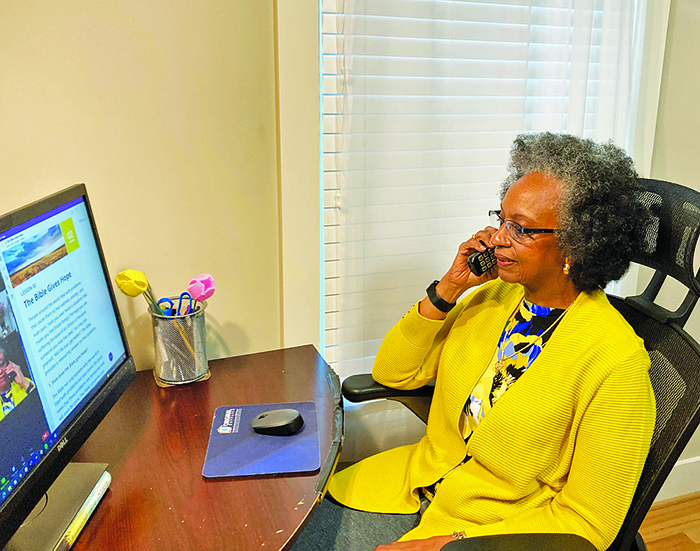Rose Yates used to knock on doors and make visits. Now, she’s doing it all from home, even two years later as the Jehovah’s Witnesses adapt. (Submitted)
Rose Yates would rarely go more than a few days without knocking on a door or visiting a Bible student as part of her volunteer ministry.
That abruptly changed in the spring of 2020 when Jehovah’s Witnesses suspended their in-person public ministry, meetings and large conventions.
Two years later, the Western North Carolina resident is busier than ever.
“We talk to many more people than we used to,” said Yates, a retired Department of Education administrator. “I have a lot of conversations on how the Bible can help reduce anxiety and stress. One woman told me she never felt worthy and has come to see how God loves and cares for her as an individual.”
With this historic change, the number of Jehovah’s Witnesses grew 3% in the United States in 2021 alone, matching the most significant increase for the organization over the past decade and the second-largest percentage increase since 1990.
“Staying active in our ministry while remaining safe has had a powerful preserving effect on our congregants and communities,” said Robert Hendriks, U.S. spokesman for Jehovah’s Witnesses. “The wise decision not to prematurely resume in-person activities has united us and protected lives while comforting many people in great need. The results speak for themselves.”
For congregants like Yates, the virtual pivot has meant trading her bookbag for a landline, laptop, iPad and smartphone and her walking shoes for slippers. Her tools have changed, but her message is the same.
She regularly shares scriptures with dozens of community members and conducts free Bible courses via telephone and Zoom with upward of 20 people a month.
Last year, the international organization reported all-time peaks in the number of people participating in their volunteer preaching work, increased attendance in Zoom meetings and more than 171,000 new believers baptized. In the past two years, more than 400,000 have been baptized worldwide.
Some whose ministry or attendance at religious services had slowed because of age and poor health said they feel reenergized with the convenience of virtual meetings and a home-based ministry.
“I have had the opportunity to work with older ones on Zoom that I never worked with before because they were not able to get out,” said Tracy Hutchinson. “There is such a connection that if we didn’t have this, I think it would definitely be more challenging to stay positive like we have been.”
The Hutchinsons use Zoom to worship twice a week with their Western North Carolina congregation and regularly join online ministry groups to comfort neighbors and family through phone calls, letters, texts and email.
“To think, if we were just dialing up and listening, how disconnected we would feel,” said Coby Hutchinson. “With Zoom we can see expressions on faces and share our feelings. This helps us show love and concern for one another.”
The official website of Jehovah’s Witnesses, translated into more than 1,000 languages, has also leveraged the organization’s outreach.
After starting a free self-paced Bible course on jw.org in December 2019, Lisa Owen requested a free, interactive Bible study over Zoom. She was one of nearly 20,000 baptized as one of Jehovah’s Witnesses last year in the United States in private settings, including backyard swimming pools, tubs and even rivers.
To start an online Bible study course, receive a visit or attend a virtual meeting locally, visit jw.org.

